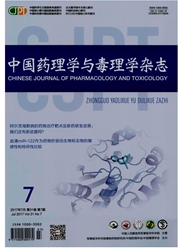

 中文摘要:
中文摘要:
大黄素-8-O-β-D-葡萄糖苷(EG)的药理作用研究在国内外取得明显的研究进展。EG对谷氨酸诱导产生的神经损伤和缺血再灌注造成的神经损伤等均具有保护作用,可以逆转β淀粉样蛋白对神经细胞功能的影响,通过可逆性抑制胆碱酯酶的活性起促智作用,具有促成骨细胞增殖和分化及抑制骨溶解作用,并能明显延长小鼠睡眠时间,能显著降低3-羟基-3-甲基戊二酰辅酶A还原酶活性起降血脂等作用;同时EG还具有抗菌抗病毒和抗肿瘤等作用。EG毒性较小,其药代动力学研究发现,其代谢符合单室模型一级动力学过程,在大鼠心、肝、脑和肾中分布较多,大约有45%的原形药物经尿和粪便排出体外。
 英文摘要:
英文摘要:
Studies on the pharmacological worldwide effect of emodin-8-O-β-D-glucopyranoside ( EG ) have achieved great progress worldwide. EG can protect against neuronal damage induced by glu- tamate and cerebral ischemia-reperfusion injuries, reverse the beta amyloid influence on nerve cell func- tion and promote intelligence by inhibiting cholinesterase reversibly. EG can promote osteoblastic prolifer- ation and differentiation, inhibit bone dissolution, and prolong sleeping time of mice significantly. EG has lipid-lowing effect by reducing the activity of 3-hydroxy-3-methylglutaryl coenzyme A reductase. The anti- bacteria, anti-virus and anti-tumor activities of EG were also reported. EG has proved to be low in toxici- ty. Pharmacokinetic study shows that the metabolism of EG fits in with the first order-kinetics compart- ment model. EG is distributed mainly in the heart, liver, brain and kidney of rats, and 45% of the original EG is excreted in urine and dejecta.
 同期刊论文项目
同期刊论文项目
 同项目期刊论文
同项目期刊论文
 期刊信息
期刊信息
